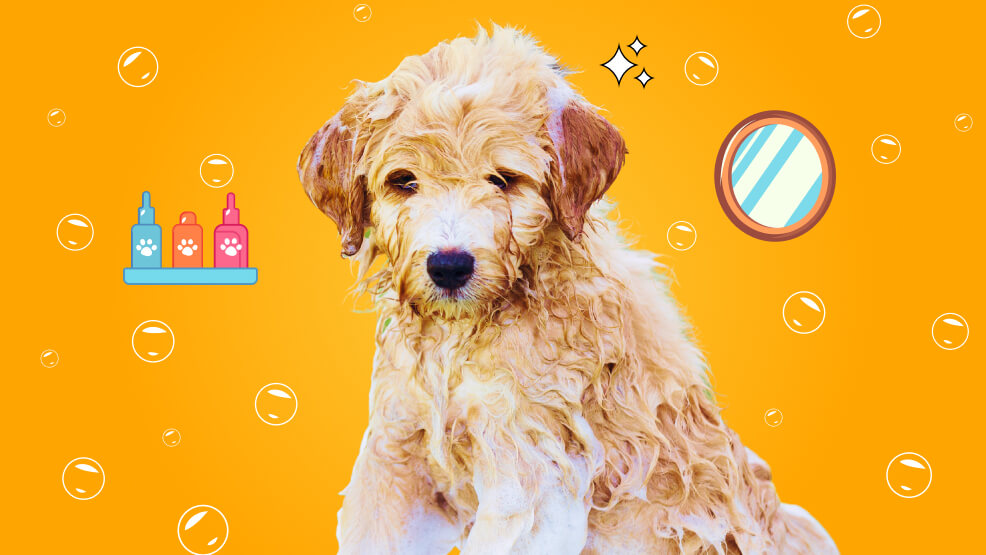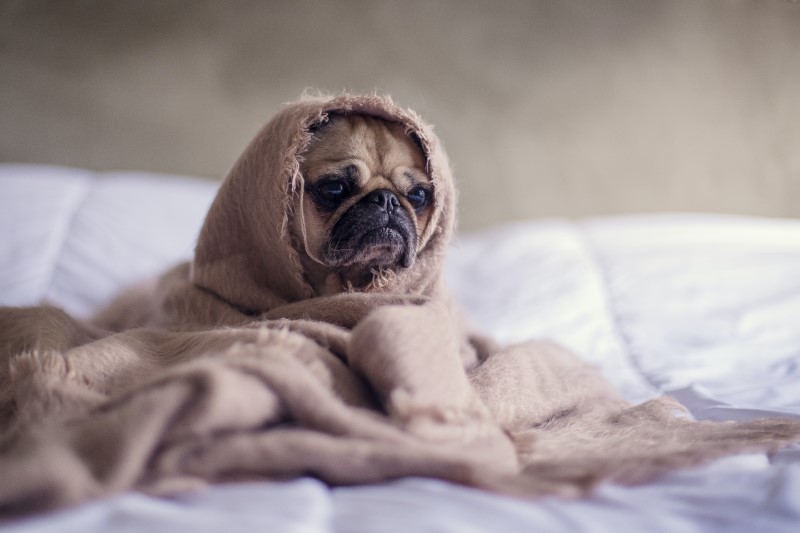When Can You Give a Puppy a Bath? The Best Age to Start and How Often Should You Do It?


Bringing a new furry friend into your life is an exciting and rewarding experience, but it also comes with responsibilities. One of the essential aspects of caring for a puppy is maintaining proper grooming habits, which include regular bathing.
Bathing not only keeps your pup clean and fresh but also plays a crucial role in their overall health and well-being. A well-groomed puppy is less likely to develop skin irritations, infections, or matted fur, which can lead to discomfort and potential health issues.
When Can You Give a Puppy a Bath?

The question of when to start bathing your puppy is a common one among new pet owners. There is no definitive age that applies to all puppies. But most experts recommend waiting until your furry companion is at least 12 weeks old before introducing them to their first bath.
This is primarily because puppies are born with a natural protective coating that helps regulate their body temperature and shields their delicate skin from potential irritants. However, it’s essential to note that this timeline can also vary depending on the individual needs of each puppy.
Some may require earlier or later bathing, depending on various factors. If your puppy gets exceptionally dirty or develops an unpleasant odor, it may be necessary to wash them sooner than the recommended 12-week mark.
Factors to Consider Before Giving a Puppy a Bath

Before you decide to give your puppy their first bath, there are several factors to consider:
Age
As mentioned earlier, most experts recommend waiting until your puppy is at least 12 weeks old before bathing them. However, if your puppy has a specific condition or gets excessively dirty, you may need to wash them earlier in consultation with your veterinarian.
Breed
Some breeds, such as double-coated or long-haired dogs, may require more frequent bathing to prevent matting and tangling. Consult with a professional groomer or your veterinarian for breed-specific grooming recommendations.
Health
If your puppy has any underlying health conditions or skin sensitivities, it’s crucial to consult with your veterinarian before bathing them to ensure you use appropriate products and techniques.
Temperament
Some puppies may be more anxious or resistant to bathing than others. It’s essential to introduce them to the process gradually and make it a positive experience to avoid creating negative associations with grooming.
How Often Should You Bathe a Puppy?

The frequency of bathing your puppy depends on several factors, including their breed, activity level, and living environment. As a general guideline, most puppies can be bathed every 4-6 weeks, but this may vary based on individual circumstances.
Here are some factors that may influence the frequency of bathing:
- Breed: As mentioned earlier, some breeds with longer or double coats may require more frequent bathing to prevent matting and tangling.
- Activity level: If your puppy is highly active and spends a lot of time outdoors, they may need more frequent bathing to remove dirt, debris, and odors.
- Living environment: Puppies living in urban areas or homes with multiple pets may require more frequent bathing due to increased exposure to dirt and dander.
- Skin and coat condition: Puppies with sensitive skin or skin conditions may require more frequent bathing with specialized products recommended by your veterinarian.
It’s essential to strike a balance and avoid over-bathing, as excessive bathing can strip your puppy’s coat of natural oils, leading to dry skin and a dull, brittle coat.
Bathing a Puppy: Step-by-step Guide

Bathing a puppy can be a fun and bonding experience, but it’s essential to follow the proper steps to ensure a successful and stress-free process. Here’s a step-by-step guide to help you bathe your puppy like a pro:
Step 1: Gather supplies
Before starting, gather all the necessary supplies, including a puppy-safe shampoo, a non-slip mat or towel for the bathtub, a cup or pitcher for rinsing, and plenty of towels for drying.
Step 2: Prepare the bathing area
Choose a bathing area that is comfortable for both you and your puppy. A sink or small tub can work well for smaller puppies, while a larger tub or shower may be more suitable for larger breeds.
Step 3: Brush your puppy
Before bathing, gently brush your puppy’s coat to remove any loose hair, dirt, or debris. This will help prevent matting and ensure a more thorough cleaning.
Step 4: Introduce your puppy to water
If it’s your puppy’s first bath, take it slow and introduce them to the water gradually. Start by letting them explore the bathing area and get comfortable with the sound and feel of running water.
Step 5: Wet your puppy
Once your puppy is comfortable, gently wet their coat with lukewarm water, being careful to avoid getting water in their ears or eyes.
Step 6: Apply shampoo
Use a puppy-safe shampoo and gently massage it into your puppy’s coat, working from the neck down. Avoid getting shampoo in their eyes, ears, or mouth.
Step 7: Rinse thoroughly
Rinse your puppy’s coat thoroughly with clean water, ensuring all traces of shampoo are removed. Leftover shampoo residue can cause skin irritation and dull the coat.
Step 8: Dry your puppy
After rinsing, gently towel-dry your puppy, being careful not to rub too vigorously, as this can cause tangles or discomfort. You can also use a low-heat setting on a hairdryer to help dry their coat, but be cautious and keep the dryer at a safe distance to avoid burning their delicate skin.
Once the bath is complete, reward your puppy with treats and plenty of praise for their good behavior. This will help reinforce positive associations with the bathing process.
Remember, bathing should be a positive experience for your puppy, so take your time, and make it a fun and rewarding activity for both of you.
Common Mistakes to Avoid When Bathing a Puppy

Bathing a puppy can be a rewarding experience, but it’s essential to avoid common mistakes that can make the process stressful or even harmful to your furry friend. Here are some common pitfalls to be aware of:
- Applying the wrong product: Using human shampoos, harsh detergents, or products not specifically formulated for puppies can strip their coat of natural oils, leading to dry, irritated skin and a dull, brittle coat.
- Failing to brush before bathing: Neglecting to brush your puppy’s coat before bathing can result in matting and tangling, making the bathing process more difficult and uncomfortable for your pup.
- Getting water in the ears or eyes: Water in a puppy’s ears or eyes can cause discomfort, infections, or even ear or eye injuries. Be cautious when wetting and rinsing your puppy’s head area.
- Using water that’s too hot or too cold: Puppies are sensitive to extreme temperatures, so it’s essential to use lukewarm water that’s comfortable and safe for their delicate skin.
- Rushing the process: Bathing a puppy can be a new and potentially stressful experience for them. Rushing through the process or being too forceful can create negative associations with grooming and make future baths more challenging.
- Failing to rinse thoroughly: Leaving shampoo residue in your puppy’s coat can lead to skin irritation, dull fur, and an unpleasant odor.
- Drying with excessive force: Rubbing your puppy’s coat too vigorously with a towel can cause tangles and discomfort and potentially damage their delicate skin.
By being mindful of these common mistakes, you can ensure a safe, stress-free, and enjoyable bathing experience for both you and your furry companion.
Tips for a Successful Puppy Bath Experience

Bathing your puppy can be a fun and bonding experience, but it’s essential to approach it with patience and preparation. Here are some tips to help ensure a successful and stress-free puppy bath:
- Start early: Introduce your puppy to the bathing process as early as possible, even if it’s just letting them explore the bathing area and get comfortable with the sounds and smells.
- Stay positive: Puppies are highly perceptive and can sense your emotions. Approach bath time with a positive, calm, and reassuring attitude to help your puppy feel secure and comfortable.
- Use positive reinforcement: Reward your puppy with treats, praise, and their favorite toys during and after the bath to reinforce positive associations with grooming.
- Take breaks: If your puppy becomes overly anxious or stressed during the bath, take a break and try again later. Forcing the process can create negative associations and make future baths more challenging.
- Enlist help: Having an extra set of hands can be helpful, especially for larger or more energetic puppies. One person can hold and reassure the puppy while the other handles the bathing tasks.
- Create a comfortable environment: Ensure the bathing area is warm, well-lit, and free from distractions or loud noises that could startle your puppy.
- Use puppy-safe products: Always use shampoos, conditioners, and other grooming products specifically formulated for puppies or sensitive skin to avoid irritation or adverse reactions.
- Dry thoroughly: After bathing, ensure your puppy is completely dry before allowing them to roam or play. Dampness can lead to chills, discomfort, and potentially skin or ear infections.
Bathing can be a new and potentially stressful experience for puppies. So be patient and consistent, and make it a positive experience to help your furry friend become comfortable with the grooming process.
Summing Up
Bathing your puppy is an essential aspect of their overall care and well-being. While the recommended age to start bathing may vary, it’s generally advisable to wait until your puppy is at least 12 weeks old before introducing them to their first bath. However, factors such as breed, health, and living environment can influence the frequency and timing of bathing.
By following a step-by-step guide, using the right products and supplies, and avoiding common mistakes, you can make bath time a positive and stress-free experience for both you and your furry companion. Remember to be patient and consistent, and use positive reinforcement to create a strong foundation for successful grooming sessions throughout your puppy’s life.
While bathing your puppy at home can be a rewarding bonding experience, seeking the services of a professional groomer can also be beneficial, especially for breeds with specific grooming needs or if you’re unsure about proper techniques.
Ultimately, regular grooming and bathing are essential for maintaining your puppy’s health, comfort, and overall well-being. By prioritizing proper grooming habits from an early age, you’ll be setting your furry friend up for a lifetime of cleanliness, confidence, and happiness.









Leave A Comment